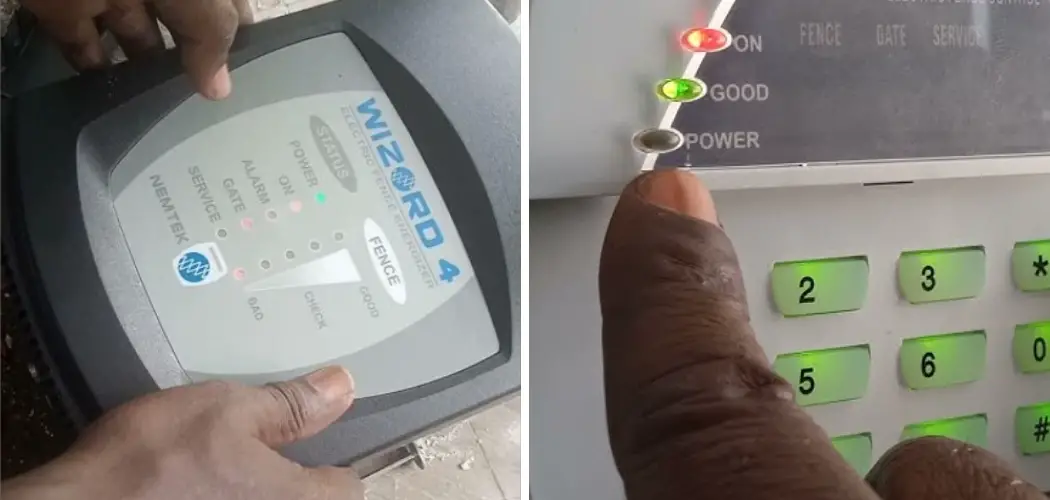Are you tired of hearing your electric fence alarm going off even when there is no threat? Resetting the alarm can be a simple solution to this issue. In this guide, we will discuss step-by-step instructions on how to reset electric fence alarm.
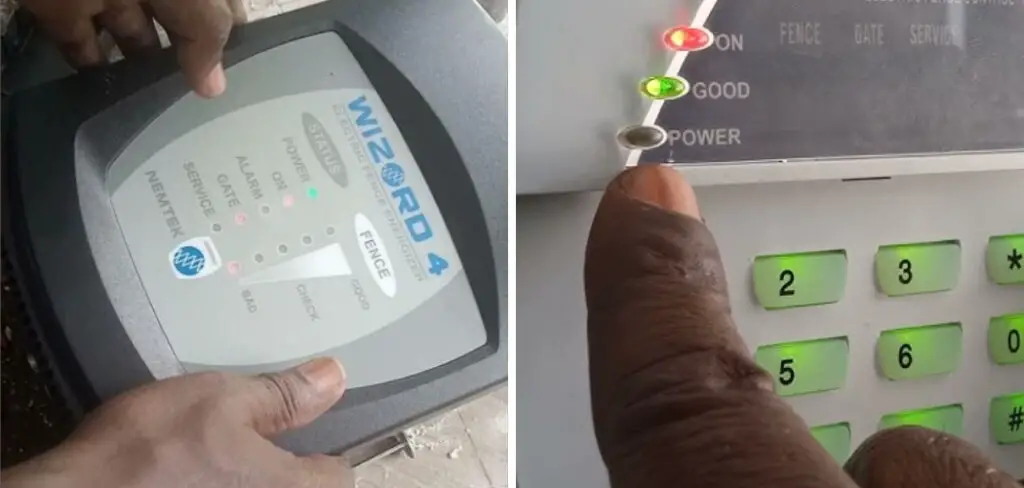
Resetting an electric fence alarm is a crucial skill for maintaining the security and functionality of your property. Whether you’ve experienced a false alarm or a genuine perimeter breach, knowing how to quickly and efficiently reset your system can minimize downtime and ensure your property remains protected.
This guide is designed to walk you through the step-by-step process of resetting your electric fence alarm, from identifying common reasons for alarms to navigating through the reset procedure. Our aim is to provide you with the knowledge needed to manage your electric fence system effectively, ensuring your peace of mind and the safety of your premises.
What are the Benefits of Resetting Electric Fence Alarm?
Resetting an electric fence alarm offers many benefits, including:
- Quick and Easy Resolution to False Alarms: By resetting the alarm, you can quickly resolve any false alarms caused by equipment or weather issues.
- Maintaining Safety and Security: Regularly resetting your electric fence alarm ensures that your system functions properly and provides maximum property protection.
- Saving Time and Money: Resetting the alarm alone can save you time and money by avoiding unnecessary service calls or maintenance fees.
- Peace of Mind: Knowing how to reset your electric fence alarm gives you peace of mind, knowing that you have control over your security system.
With these benefits in mind, let’s dive into the step-by-step process of resetting your electric fence alarm.
What Will You Need?

Before you begin the reset process, gathering all the necessary tools and equipment is essential. The items you will need include:
- Owner’s manual: This contains detailed instructions on how to reset your specific electric fence alarm system.
- Ladder: If your electric fence is installed at a high point, you may need a ladder to access certain system parts.
- Multimeter: This tool will help you test the voltage of your electric fence and diagnose any potential issues.
- Insulated Gloves: For safety purposes, it is recommended to wear insulated gloves when handling any electrical equipment.
- Reset Key or Code: Depending on your alarm system, you may need a reset key or code to complete the reset process. Refer to your owner’s manual for specific instructions.
These items are necessary for a successful reset of your electric fence alarm. Now, let’s move on to the step-by-step process.
10 Easy Steps on How to Reset Electric Fence Alarm
Step 1: Identify the Cause of the Alarm
Before you can reset your electric fence alarm, it is essential to identify the cause. Here are some common reasons for alarms:
- Technical Issues: Faulty wiring, damaged components, or power outages can trigger false alarms.
- Environmental Factors: Heavy rain, thunderstorms, or strong winds might cause the electric fence to activate inadvertently.
- Interference: Nearby electronic devices or other sources of electrical interference can sometimes cause a false alarm.
- Intrusion Attempts: The alarm could be legitimate, triggered by an animal or someone trying to breach your perimeter.
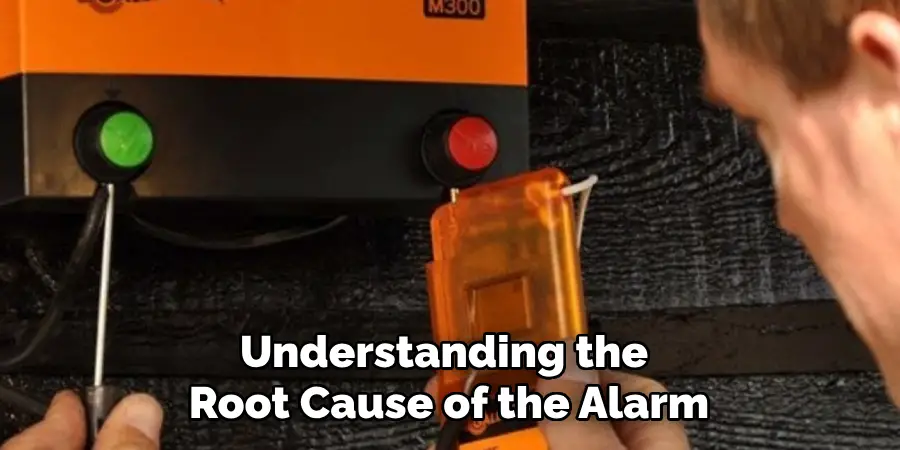
Understanding the root cause of the alarm is critical because it determines the appropriate next steps. It helps fix the real issue, ensuring that the system will not be triggered falsely again.
Step 2: Turn Off the Power
The first action in resetting your electric fence alarm is to ensure your safety and the system’s safety by turning off the power. You can locate the main power switch or circuit breaker connected to your electric fence system and switch it to the “off” position. This step is crucial to prevent any electrical accidents or further damage to the alarm system while you are working on it. Always prioritize safety and ensure the power is completely off before proceeding to the next steps.
Step 3: Check the Fence Line for Damage
With the power safely turned off, the next step involves thoroughly inspecting the fence line. Walk along the perimeter of your electric fence, closely examining it for any signs of damage such as broken wires, loose connections, or wear and tear.
Environmental factors like fallen branches or heavy debris can often cause physical damage to the fence, leading to false alarms. If you discover any damage, make note of these areas as they will need to be addressed before the system can be effectively reset. Remember, identifying and repairing any physical damage is key to ensuring the proper functionality of your electric fence alarm.
Step 4: Repair Any Damage Found
After identifying any damage during your inspection of the fence line, the next step is to repair these issues. Depending on the extent of the damage, repairs may range from simply reattaching loose wires to replacing damaged components.
If you are comfortable and skilled in making these repairs, you can proceed to fix the issues yourself. Otherwise, hiring a professional to ensure the repairs are conducted safely and correctly may be wisest. Always ensure that repairs adhere to the specifications set out in your owner’s manual. Completing this step is crucial for the integrity of your electric fence and to prevent future false alarms.
Step 5: Reset the Alarm System
Once you have repaired any physical damage to the fence, the next step is to reset the alarm system itself. Depending on the make and model of your electric fence alarm, the reset process can vary. Typically, you will need to refer to your owner’s manual for specific instructions tailored to your system. Generally, reset involves pressing a reset button on the main control unit or entering a reset code.
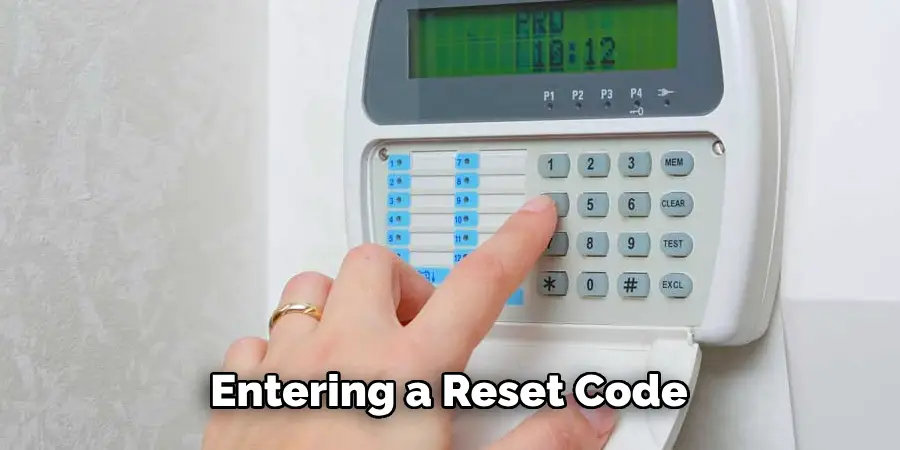
If your system requires a code, ensure you have it handy. Remember to keep the power off until you can reset the system to avoid any electrical hazards. After successfully resetting the alarm, you can then proceed to turn the power back on, carefully following the steps provided in your manual to ensure a safe restart of the system. This step is crucial for clearing any error states or issues that caused the initial alarm, effectively restoring the system’s monitoring capabilities.
Step 6: Turn the Power Back On
After the alarm system has been reset, the next step is safely turning the power back on. This is done by returning to the main power switch or circuit breaker that was initially switched off and turning it to the “on” position. It’s crucial to proceed with caution during this step to ensure the safety and the proper functioning of the electric fence alarm.
Once the power is on, observe the system for a few minutes to confirm that everything is operating as expected and that the alarm does not trigger without cause. This step is essential for reactivating the electric fence’s security features while ensuring that the system is free from previously identified issues.
Step 7: Test the Electric Fence Alarm
Now that the power is back on and the system has been reset, it’s important to conduct a test to ensure that the electric fence alarm is fully operational. If available, you can do this by activating the test mode on your system. Test mode typically simulates an intrusion or fence breach without triggering a full alarm, allowing you to verify the system’s responsiveness. Alternatively, carefully touch a non-metallic object against the fence to test its reaction, but only if you’re confident in your owner’s manual’s safety measures and procedures.

Observe how the alarm reacts, ensuring it activates accordingly and resets itself if your system is designed to do so automatically. Testing the electric fence alarm is crucial to confirm that your repairs and reset were successful and that your property is securely protected once again.
Step 8: Monitor the System and Follow Up
After successfully resetting and testing your electric fence alarm, it is essential to continue monitoring the system closely for the next few days to ensure it remains fully operational and does not trigger false alarms. Make a habit of regularly checking the fence line for any new signs of damage or interference that could potentially compromise the system. Additionally, keep an eye on the alarm system’s logs or notifications, if available, to track its performance and identify any unusual patterns that may arise. Suppose you encounter further issues or the system triggers another false alarm.
In that case, conducting a more thorough investigation or consulting with a professional for advanced diagnostics and solutions may be necessary. Proactive monitoring and maintenance are key to ensuring your electric fence alarm’s long-term reliability and effectiveness in protecting your property.
Step 9: Schedule Regular Maintenance Checks
To ensure the longevity and efficiency of your electric fence alarm system, scheduling regular maintenance checks is crucial. These checks should include a comprehensive review of all components, including the power supply, wiring, posts, and the alarm mechanism itself.
It’s advisable to perform these maintenance checks at least twice a year or more frequently in areas prone to severe weather conditions or with a higher risk of physical damage. During these checks, look for signs of wear and tear, corrosion, or any other potential issues that could impair the system’s functionality.
Regular maintenance not only helps prevent false alarms but also extends the life of your electric fence system, ensuring it remains a reliable security measure for your property.
Step 10: Document and Update Your Maintenance and Repair Logs
Keeping accurate and up-to-date records of all maintenance checks, repairs, and any issues encountered with your electric fence alarm system is an integral part of its management. Documentation should include dates, specific actions taken, parts replaced, and any observations related to the system’s performance.
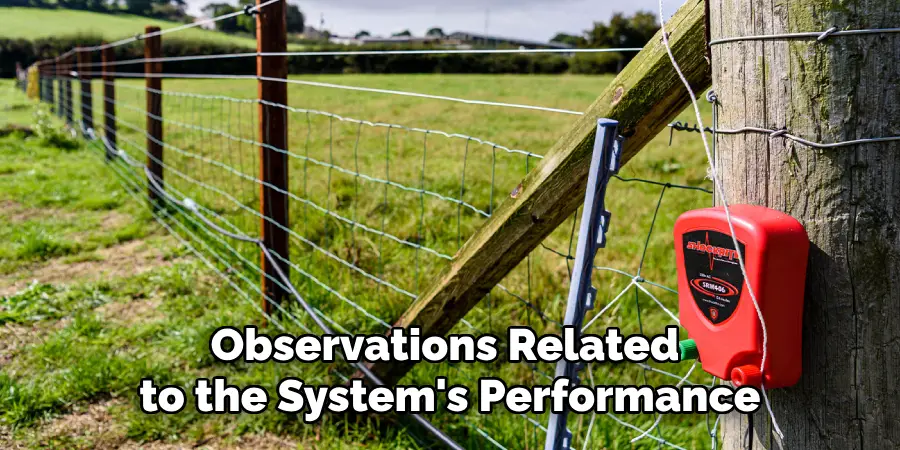
This log will serve as a valuable reference to track the history of the electric fence’s condition and the effectiveness of past repairs. It can also provide insights into recurring problems, guiding future maintenance strategies. Furthermore, a well-maintained log can be crucial for warranty claims or when consulting with professionals for troubleshooting or upgrades.
By following these steps and implementing a regular maintenance schedule, you can ensure the proper functioning of your electric fence alarm system for years to come.
5 Additional Tips and Tricks
- Verify Power Supply Consistency: Before proceeding with any reset procedure, ensure that the power supply to the electric fence and alarm system is stable and uninterrupted. Fluctuations in power can cause the system to malfunction, leading to unnecessary resets.
- Use Protective Gear: Always wear appropriate protective gear such as gloves and protective eyewear when handling and resetting the electric fence alarm. This reduces the risk of personal injury from electrical shocks or other physical hazards.
- Consult the User Manual: Each electric fence alarm system is unique. Always refer to the user manual specific to your system for detailed instructions on resetting procedures. This ensures that you follow the manufacturer-recommended steps, which vary between models.
- Regularly Update System Software: If your electric fence alarm system operates with software, ensure that it is regularly updated. Software updates often include bug fixes and improvements that can enhance the reliability and functionality of your alarm system.
- Engage Professional Services When in Doubt: If you’re unsure about any step in the reset process or if the system isn’t functioning properly after a reset, don’t hesitate to contact a professional. Experts can provide valuable advice, perform diagnostics, and ensure your system is set up correctly, minimizing the risk of further issues.
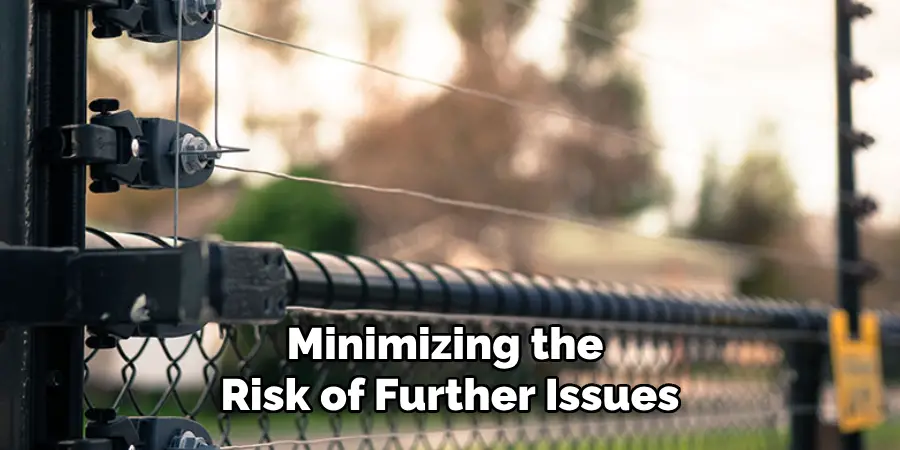
With these additional tips and tricks, maintaining and resetting your electric fence alarm system will be efficient and safe.
5 Things You Should Avoid When Resetting Your Electric Fence Alarm
- Ignoring Manufacturer Instructions: Always follow the specific guidelines provided by the system’s manufacturer. Ignoring these instructions can lead to improper resetting, potentially damaging the system or voiding your warranty.
- Bypassing Safety Protocols: Safety should be your top priority. Do not attempt shortcuts that bypass safety measures, such as not wearing protective gear or ignoring to shut off power before handling the system. These actions could result in personal injury or further damage to the system.
- Resetting Without Diagnosing the Problem: Don’t rush to reset the alarm without first identifying the underlying issue. Resetting without diagnosing can mask critical problems that need to be addressed, leading to recurrent faults and potentially compromised security.
- Using Incorrect Tools: Employing tools not designed for electrical work or that are inappropriate for your specific system can cause damage. Always use the correct tools as recommended in your user manual or by a professional.
- Neglecting Environment and Weather Conditions: Attempting to reset or repair your electric fence alarm during adverse weather conditions, such as during a thunderstorm or in extremely wet conditions, can be dangerous. Additionally, failing to consider environmental factors that may have caused the problem, like vegetation touching the fence, can lead to repetitive issues.
By avoiding these common mistakes, you can ensure a safe reset for your electric fence alarm system.
Why is Your Electric Fence Alarm Going Off?
There can be several reasons why your electric fence alarm is going off, including system malfunctions, power outages, or human or animal interference. Some common causes include:
- Faulty Wiring: Any damage to the wiring of your electric fence alarm system can cause it to go off. Rodents, harsh weather conditions, or physical damage can all lead to compromised wiring.
- Power Fluctuations: Power surges or outages can cause your electric fence alarm to go off. Inconsistent power supply can also damage the system’s components, leading to further issues.
- Hardware Malfunctions: Defective parts, such as faulty sensors or break detectors, can trigger false alarms and require replacement or repair.
- Accidental Triggers: Small animals or birds can accidentally trigger the alarm by touching the fence, causing it to go off. Human interference such as leaning on or tampering with the fence can also set off the alarm.
- System Reset Required: In rare cases, your electric fence alarm may need to be reset due to a software glitch or malfunctioning component.
If your electric fence alarm is going off frequently, it is essential to identify and address the underlying cause to ensure the system’s proper functioning. Regular maintenance and troubleshooting can help prevent false alarms and maintain your system’s integrity.
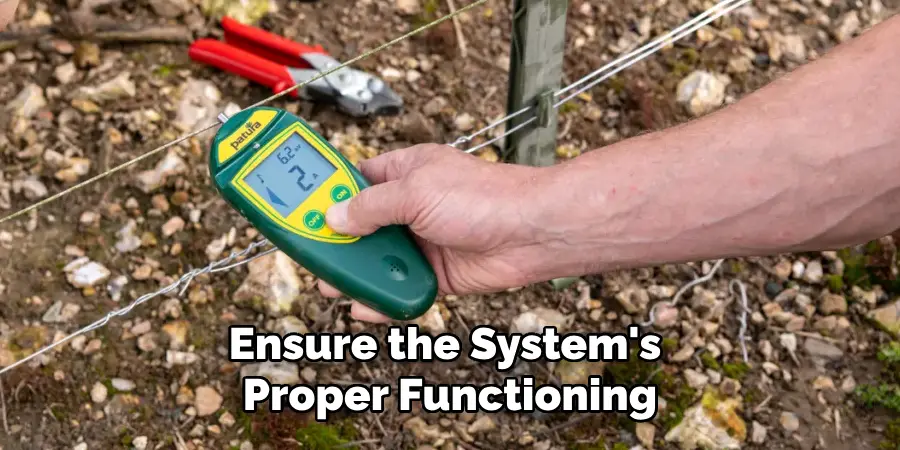
Is an Electric Fence AC or DC?
Electric fence systems can use AC (alternating current) and DC (direct current) power sources. The type of electric fence you have will depend on your specific system and its components.
- DC Electric Fence: A DC electric fence uses a battery as its power source, making it independent of the main electrical grid. This type of electric fence is often used in remote or rural areas where access to electricity may be limited.
- AC Electric Fence: An AC electric fence runs on power from the main electrical grid and typically requires a specialized energizer that converts the AC to DC power. This type of electric fence is commonly used in urban or suburban areas.
Some electric fences may have a combination of AC and DC components, depending on the system’s specific needs. It is essential to consult your user manual or a professional to determine which type of electric fence you have and how it operates.
Conclusion
How to reset electric fence alarm is a critical process that ensures the security and functionality of your perimeter defense system. Throughout this guide, we’ve covered a comprehensive approach that includes understanding the importance of regular maintenance, adhering to safety protocols, and employing strategic troubleshooting methods.
You can effectively reset your electric fence alarm system by following the manufacturer’s instructions, using the appropriate tools, and addressing any underlying issues that may trigger the alarm. Remember, ongoing care and attention prevent unnecessary alarms and extend the system’s lifespan.
In cases where challenges persist, consulting with professional services ensures that your electric fence alarm operates optimally, providing peace of mind and security for your property.

